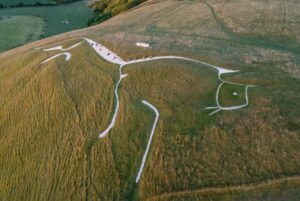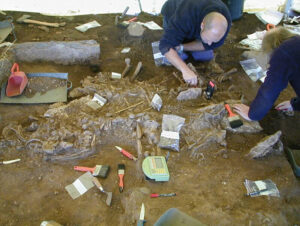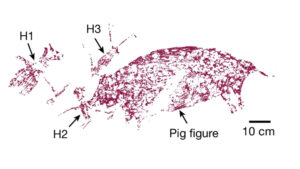Archaeologists have uncovered the tomb of Emperor Xiaomin, in Xianyang province in northwestern China. The 1,400-year-old tomb contains evidence of an early power struggle in the Northern Zhou Dynasty.
The life of an Emperor during this tumultuous period of Chinese history was hardly enviable. The warlord Yuwen Hu, put his cousin Xiaomin — whose real name was Yuwen Jue — on the throne in 557, when he was only 15.
Hu used him as a puppet, but when Jue began rebelling after a few months on the throne, his cousin had him killed and buried as a mere duke. Then he swiftly filled the position with Jue’s brother, Emperor Ming.
Jue’s brother didn’t fare much better. After a short time, he was poisoned. Hu continued to pull the strings of whomever he put on the throne until 572 when the warlord himself was killed.
Long undervalued as a duke
Before the discovery of this tomb, Jue/Xiaomin was known only as a duke. On the eastern side of the tomb, an epitaph written with cinnabar paint even identifies him as the Duke of Lueyang. Not until almost two decades later did Jue’s other brother, now Emperor Wu, declare Jue the true founder and first emperor of the Northern Zhou Dynasty.
This discovery is a huge step for research into the Northern Dynasty and its emperors. Until now, Xiaomin’s actual role was sketchy.

A camel figurine from the tomb. Photo: Shaanxi Academy of Archaeology
The medium-sized tomb originally had a ditch around it, to mirror the walls of a living person’s home. “Treating the dead with the same respect as the living also shows the Chinese philosophy behind burial traditions,” archaeologist Xue Ruiming told Global News
During excavation, researchers uncovered 146 artifacts, including many little figurines depicting soldiers on horses and camels carrying goods. Archaeologists suspect there used to be even more artifacts, but that the tomb had been looted.

A figurine that depicts a soldier on horseback. Photo: Shaanxi Academy of Archaeology
Brothers’ tombs nearby
This tomb is one of many high-status burials from the Northern, Sui, and Tang Dynasties in the area. The tombs of both of Xiaomin’s brothers, Ming and Wu, lie within 10km of this one. Both were previously excavated.
This period in Chinese history featured many short-lived regimes, including that of the Northern Zhou Dynasty. This is known as the period of the Northern and Southern Dynasties. The two eventually unified during the reign of Emperor Wen.






